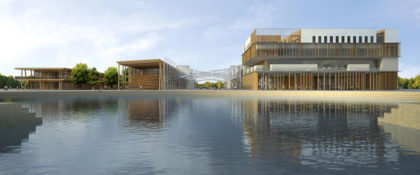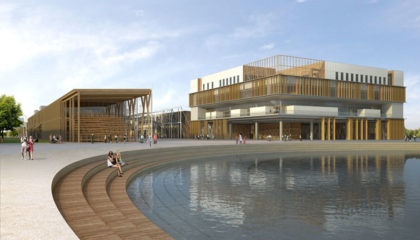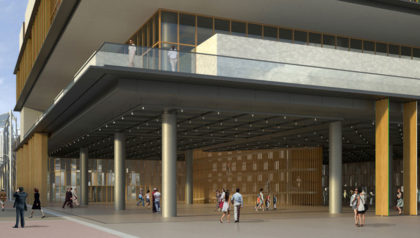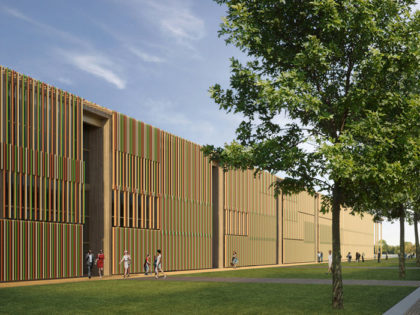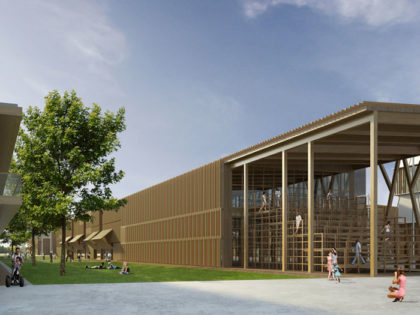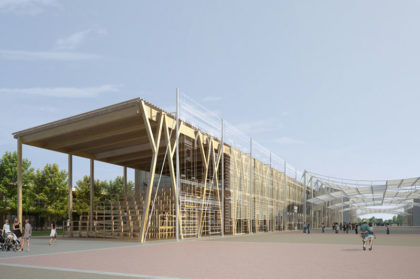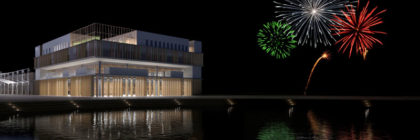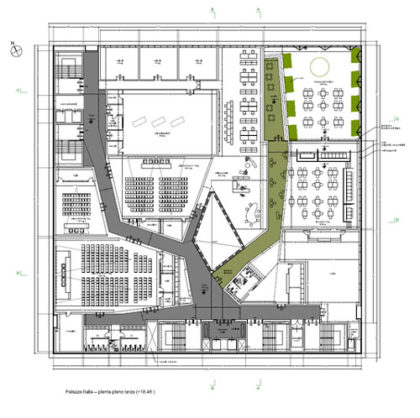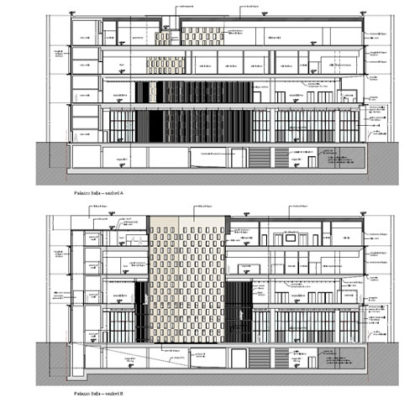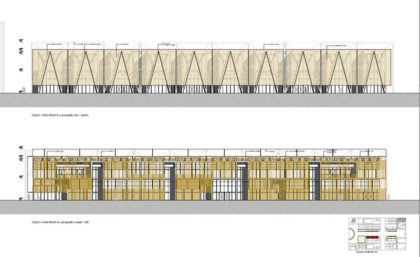Palazzo Italia
Expo 2015, Milan
Nel progetto Palazzo Italia i differenti contenuti funzionali e rappresentativi del padiglione portano a distinguere le configurazioni dei diversi piani: da quella del piano terra con lo spazio libero e flessibile a quella dell’ultimo piano con il rooftop building del ristorante e delle altre funzioni sociali. In questo modo si vuole realizzare il ‘Palazzo in forma di città’ della tradizione italiana, invece di un volume decorato.
Il Cardo è caratterizzato dalla presenza dei fronti scenografici di Dante Ferretti, quinte trasparenti che riproducono le facciate dei palazzi della tradizione italiana. Per questo motivo dietro questa scenografia gli edifici creano una sorta di ‘siepe’ neutrale formata da una successione di campate in legno ‘velate’ dal rivestimento di un innovativo tessuto semitrasparente. I prospetti degli Hortus invece sono rivestiti da un pattern di aste verticali di legno, colorate alternativamente dei colori bianco-rosso-verde. I movimenti, la densità e la distribuzione di queste aste formano una sorta di lunga e variegata staccionata adatta a questo fronte più ‘rurale’.
Con Arch.Pierluigi Nicolin, Arch. Nina Bassoli, Ing. Carlo Valagussa
Progetto strutture: Ing. Adriano Fava (Alpina s.p.a)
Progetto impianti e sostenibilità ambientale: Denis Ortali (Eltec sas)
In the Palazzo Italia project, the different functional and representative contents of the pavilion lead to distinguish the layouts of the various floors: from free and flexible space of the ground floor to the top floor with its rooftop building including a restaurant and other social functions. Thus, the plan is to build an edifice ‘in the shape of a city’ from Italian tradition, rather than a decorated volume.
The Cardo is characterised by the presence of Dante Ferretti’s scenography, transparent screens that reproduce the facades of Italian traditional buildings. For this reason, behind such scenography the buildings create some kind of natural ‘fence’ made of a succession of wooden bays veiled with an innovative semi-transparent fabric. The prospects of the Hortuses, instead, are covered in a pattern of vertical wooden posts, alternately painted with white, red and green. The movements, the density and the distribution of these posts create a sort of long and varied fence that well suits this more ‘rural’ front.
with: Arch.Pierluigi Nicolin, Arch. Nina Bassoli, Ing. Carlo Valagussa
Structure project: Ing. Adriano Fava (Alpina S.p.A)
System project and sustainability: Denis Ortali (Eltec sas)


